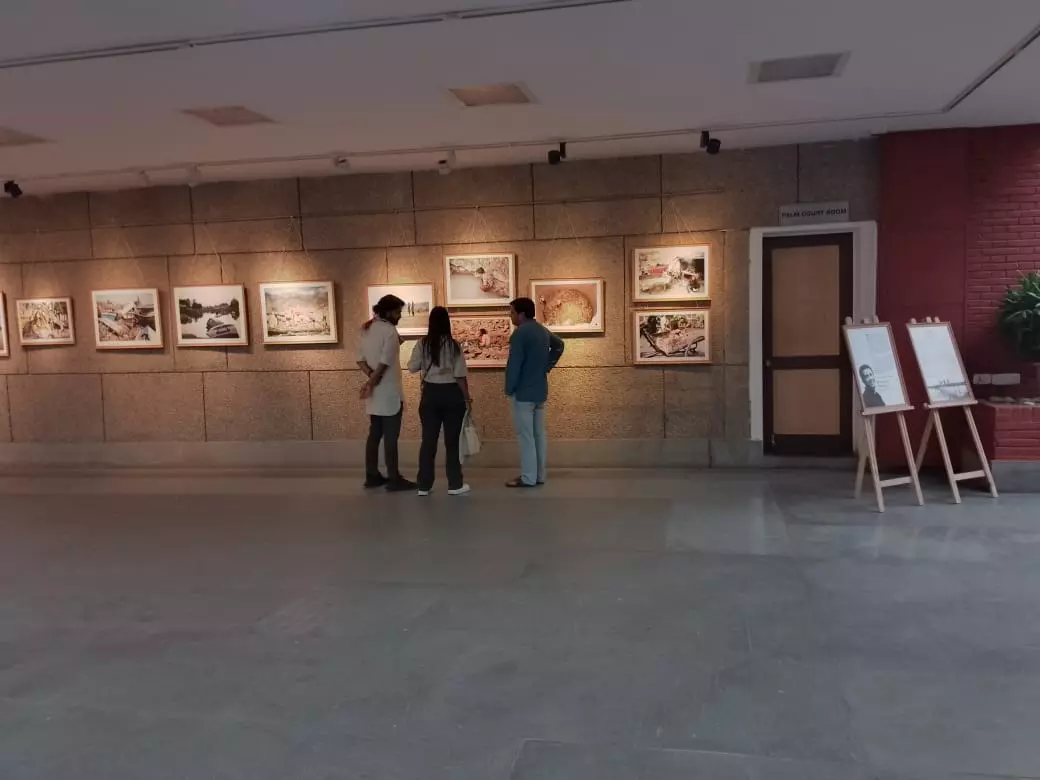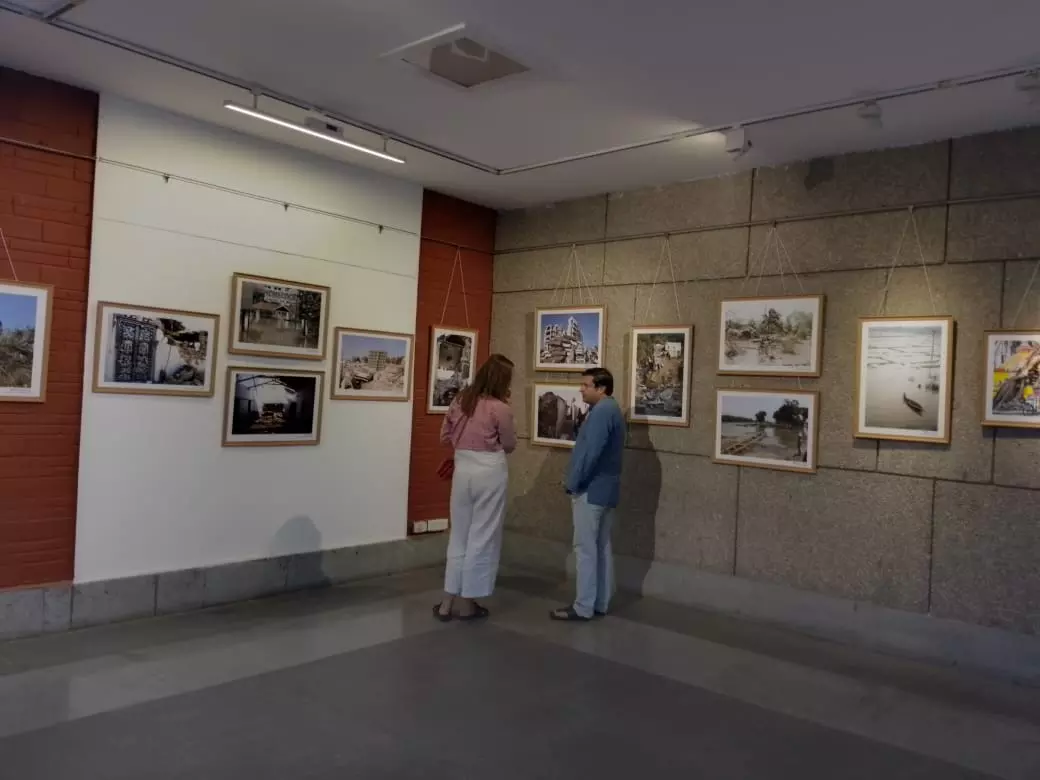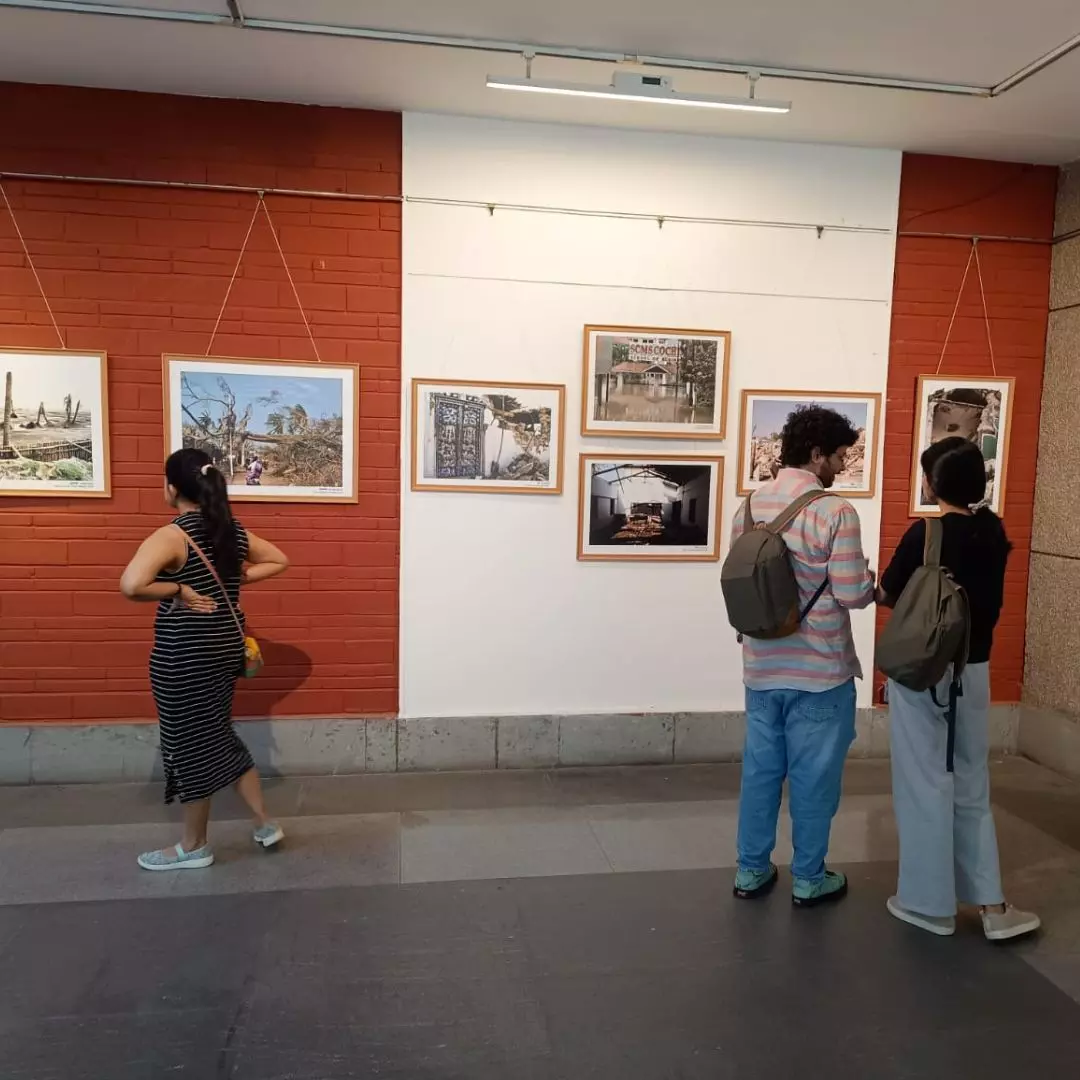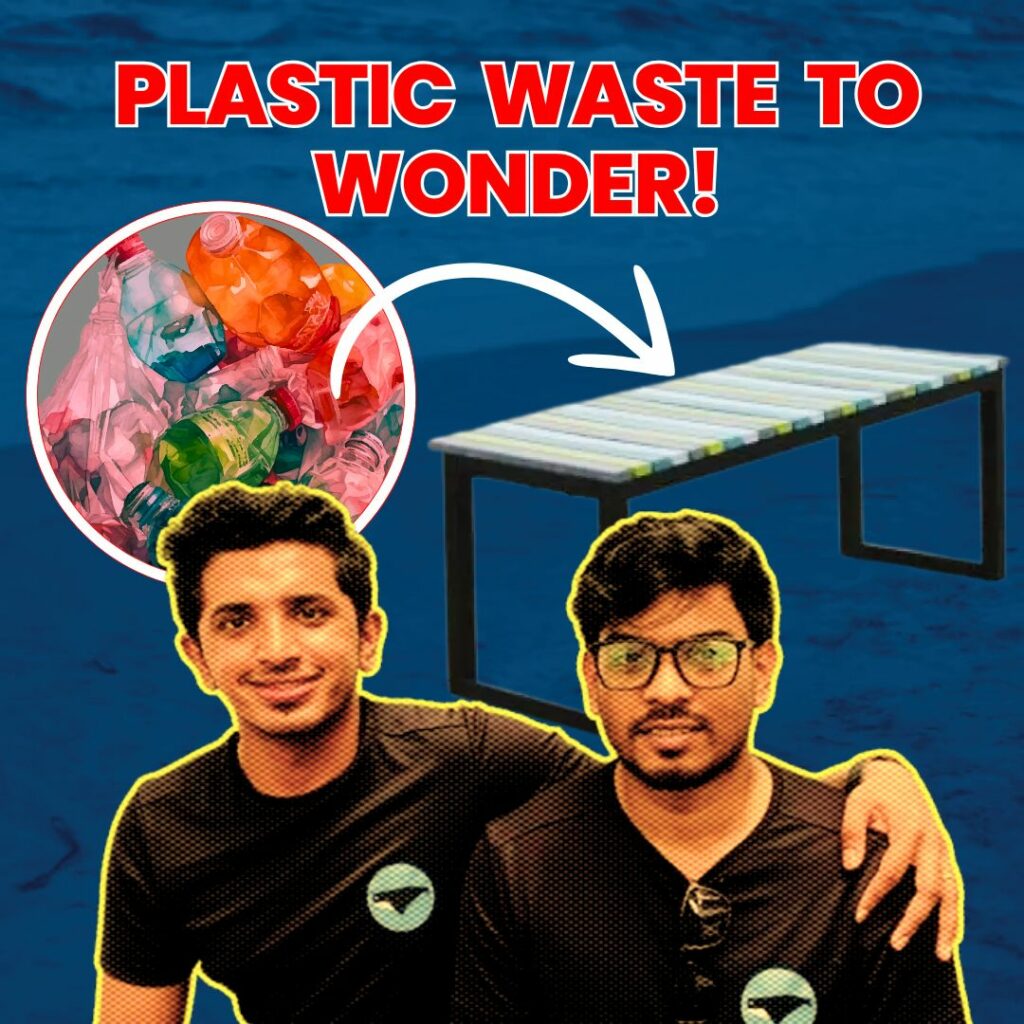Goonj known pan India for its disaster relief and rehabilitation work in the last two decades, unveiled ‘Witnessing Disasters’, a unique photo exhibition by 2015 Magsaysay awardee Anshu Gupta, Founder Goonj and Gram Swabhimaan. The exhibition is being held from 26th- 31st Oct at Open Palm Court Gallery, India Habitat Centre, Lodhi Road, New Delhi.
The ‘Witnessing Disasters’ exhibition features a collection of 60 curated photographs that offer a human perspective on disasters throughout India. These photos depict various disaster situations in India, including regions such as Kashmir, Kerala, Assam, and Gujarat. They represent a wide range of both well-known and lesser-known disasters that have occurred over the past two decades.
“Over the past 3 decades of my first-hand work in most disasters across India, with my photographs, I have tried to capture the visible and invisible aspects of relief work, the trauma and grief of the disaster hit people and the mismatch in what’s given and what’s needed, ” says Anshu Gupta said about his photograph collection.

A range of natural disasters displace millions of Indians each year. An analysis of data from the Geneva-based Internal Displacement Monitoring Centre (IDMC) shows that Internal displacement in India was 2.5 million in 2022. The average displacement in the country in the last seven years has been over 3 million annually. South Asia witnessed 12.5 million internal displacements due to disasters in 2022 with 90 per cent of the movements in the region being triggered by floods. The poor remain the worst affected by disasters.
Natural disasters resulting from natural hazards often have the unfortunate consequence of pushing individuals categorized as near-poor below the poverty line, perpetuating a cycle of more persistent and severe poverty. The individuals in this category possess minimal assets, and the adverse effects of such disasters on their livelihood further exacerbate their economic vulnerability, making it exceptionally challenging for them to escape the clutches of this poverty trap.
About Exhibition
Anshu Gupta’s collection of photographs featured in the exhibition offers a visual journey through his experiences as a witness to numerous disasters over the past two decades. This journey began in 1991 when Anshu, a photography enthusiast and student at the Indian Institute of Mass Communication (IIMC), decided to skip classes and travel to Uttarkashi in Uttarakhand following a massive earthquake. This marked his first encounter with the aftermath of disasters, the loss of dignity suffered by affected individuals, and the stark disparity between available resources and the actual needs on the ground. The photographs are drawn from his personal experiences highlighting the resilience and challenges faced by the affected communities.
Since then, Anshu has consistently been among the first responders to reach disaster-affected areas across India with his team from Goonj. He has documented a wide range of disasters in different geographic locations through his lens. Moreover, Anshu has utilized Goonj’s extensive and long-term efforts in disaster relief and rehabilitation to revisit some of these disaster-stricken regions, capturing the evolving landscape and communities in these areas as they recover and rebuild. Through his photographs, Anshu aims to provide insight into the impact of disasters on both the environment and the people affected by them.

About Goonj
Goonj is an acclaimed voluntary organization with a mission to repurpose surplus material as a valuable resource for community-driven rural development and disaster response and mitigation initiatives in India. Goonj’s approach to development prioritizes human dignity and well-being. The organization creatively transforms surplus material from various sources, both within India and globally, into a valuable resource.
This approach not only helps to address the material needs of marginalized communities but also promotes civic engagement and participation in both urban and rural areas of India. Goonj’s work is guided by a commitment to making a positive impact on the lives of those it serves while simultaneously promoting sustainability and responsible resource management.
Also Read: Timeless Marvels Of Sibsagar: A Journey Through Ahom Heritage











